

CarExpert.com.au
The CarExpert team's favourite cars of 2025
3 Days Ago
The Volkswagen T-Roc has been updated for 2023 with tweaked looks inside and out – just be careful when ticking option boxes.
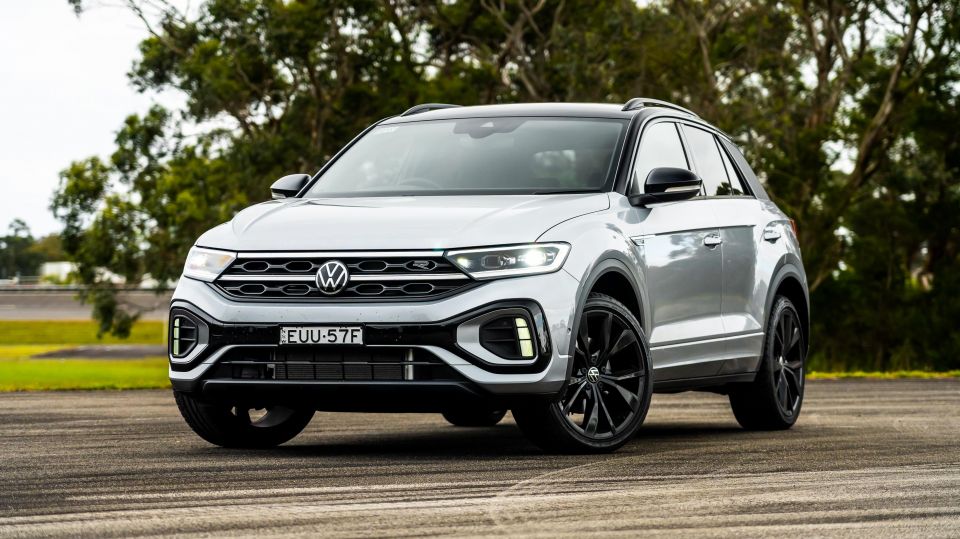
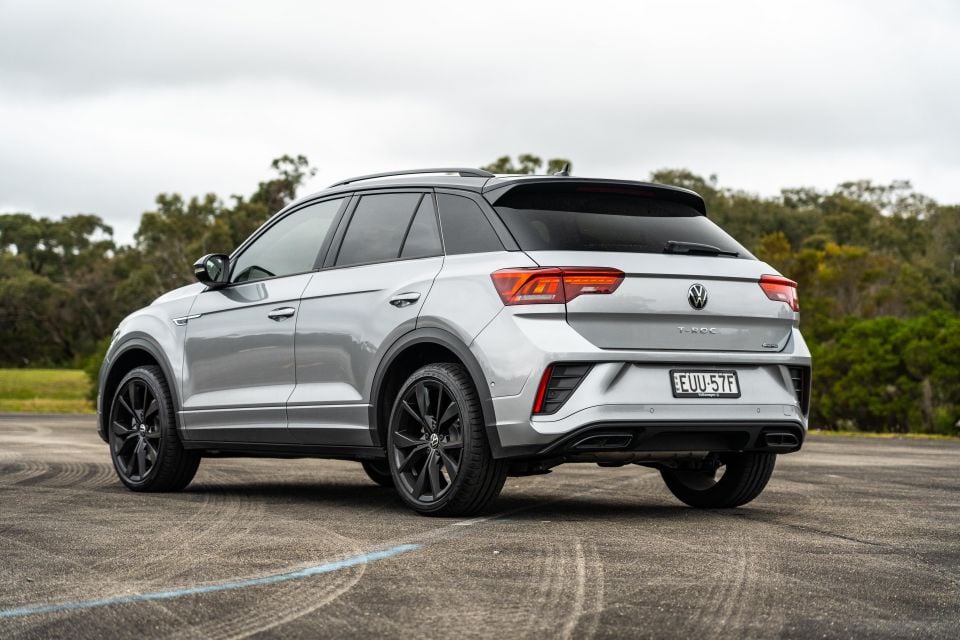

Quickly see how this car stacks up against its competition. Select any benchmark to see more details.
Where expert car reviews meet expert car buying – CarExpert gives you trusted advice, personalised service and real savings on your next new car.
The Volkswagen T-Roc crossover has been on sale in Australia since 2020, and received a mid-life update last year.

Highlights of this refresh included a redesigned front fascia, plusher dashboard, and more standard equipment.
The mid-spec 2023 Volkswagen T-Roc R-Line on test here replaces the pre-update Sport, and is the only variant available with the 140kW/320Nm tune of the company’s 2.0-litre turbocharged four-cylinder petrol engine.
Despite the whole range receiving the semi-autonomous Travel Assist system as standard for 2023, Volkswagen Australia also removed blind-spot monitoring, rear cross-traffic alert, as well the Proactive Occupant Protection system for MY23 due to component and semiconductor shortages.
The local arm also recently bumped the price of the T-Roc range by up to $1000 as part of a wider range price increase from January 1, 2023.
The T-Roc range now starts at $37,100 before on-roads for the Style, and extends to $60,300 before on-roads for the full-fat R model.
In a hotly-contested segment with quite a number of related Volkswagen Group rivals, does the mid-spec T-Roc R-Line form as the pick of the range?
The Volkswagen T-Roc R-Line is the mid-spec model before you step up to the hot T-Roc R variants. It starts from $45,200 before on-road costs.

Our tester was fitted with the optional Black Style package with electric tailgate that costs $3500; the optional Nappa leather-appointed seat upholstery package that costs $3950; as well as Pyrite Silver metallic paint with a black-painted roof which costs an additional $700.
This brings the total to $53,350 before on-road costs, or $59,668 drive-away for Victorian buyers (each state has slightly different taxes).
The only option our T-Roc R-Line tester didn’t have was the panoramic sunroof, which costs an additional $2000 and would tip the drive-away pricing to over $60,000. Eep…

In terms of competitors to the T-Roc R-Line you’re spoilt for choice.
If you want to stay within the Volkswagen Group family with the same engine tune, there’s the Skoda Karoq Sportline 4×4 ($50,990 drive-away), the Cupra Formentor V ($54,490 drive-away), and the Audi Q2 40 TFSI S line ($53,300 plus on-roads).
Our almost fully-optioned tester is also only $950 cheaper than the recently-launched T-Roc R Grid Edition which costs $54,300 before on-roads.
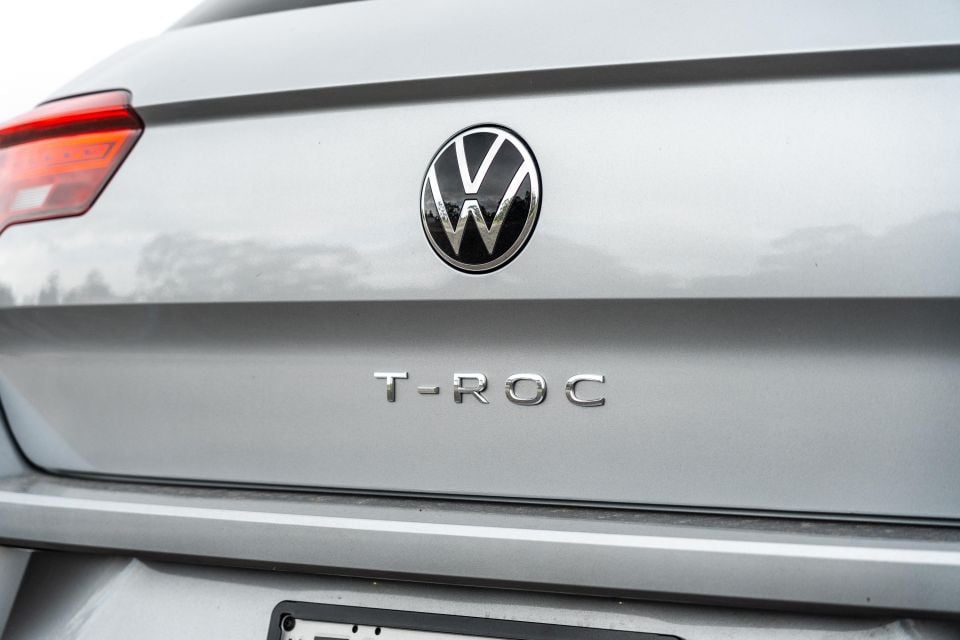
Other similarly-priced rivals include:
Prices are before on-road costs
Buy your new car without the stress. It's fast, simple and completely free.

Great service from Travis and team, second time I have used this business would not hesitate to recommend them to anyone
Craig C.
Purchased a Ford Ranger in Sunshine Coast, QLD
CarExpert helped Craig save thousands on his Ford Ranger, now let us save you on your next new car.
Find a dealHopping behind the wheel of the Volkswagen T-Roc feels very familiar in the best way possible. If you’ve sat in a recent Golf or Tiguan you’ll see, feel and hear a lot of similarities.
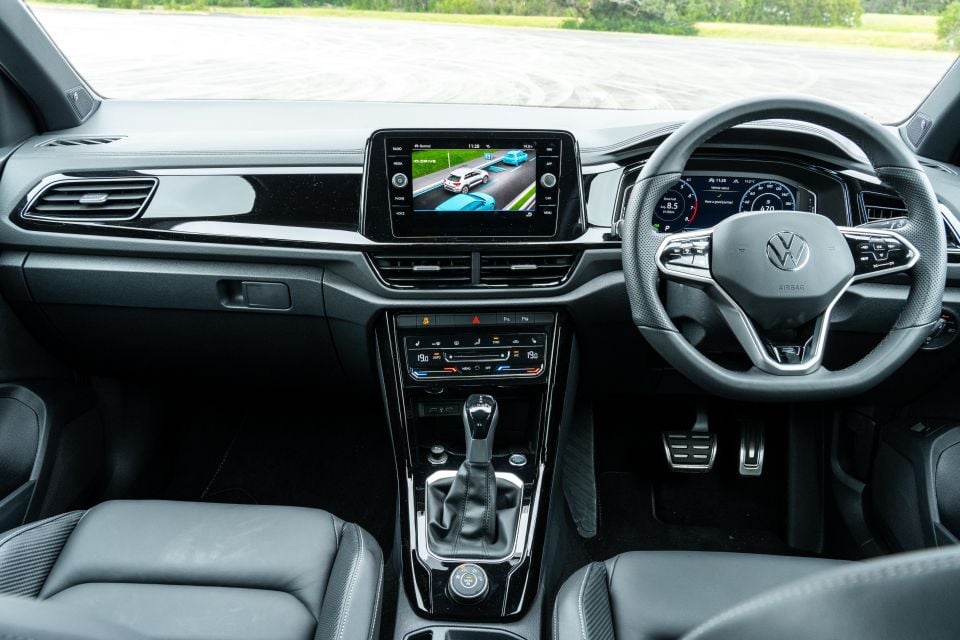
An example of this is the solid thunk when you close a door. It sounds almost bank vault-like and is similar across all current Volkswagen models. I haven’t experienced any Volkswagen with a bad-sounding door thunk thus far.
One thing to point out straight away about the updated T-Roc is the more liberal application of soft-touch plastics around the cabin. The dash is covered in soft plastic that’s squishy to touch.
You still don’t need to look far to find harder plastics, but these are relegated to places like the door tops and low down on the centre tunnel. It’d also be nice to have lined door trays like the Golf and Tiguan, too.
The extensive use of piano black around the cabin though is a little frustrating; because I understand it presents well visually, but after a week it was already grubby. It was also scratched from being wiped clean previously.
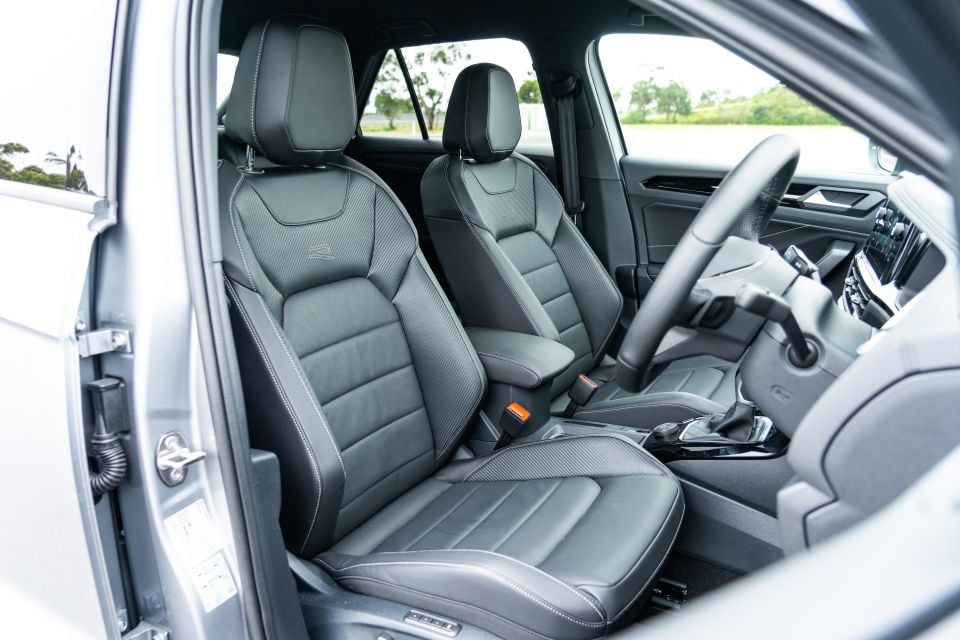
The seats on our tester are the optional Nappa leather units that form part of the $3950 Leather package; which also adds power adjustability for the driver with memory, and heated front seats.
The design of the front seats are a little plain but have some carbon fibre-looking panels that give it a little something. It’s a tad kitschy though.
Despite the plain look, the seats are extremely comfortable and have plenty of side bolstering to hug you tightly. The headrests are also super soft which makes it really easy to get comfortable on longer trips.
It would be nice if the Leather package also included ventilated front seats in addition to the heated seats, given the almost $4000 price tag, as they can get uncomfortably warm on hotter days.
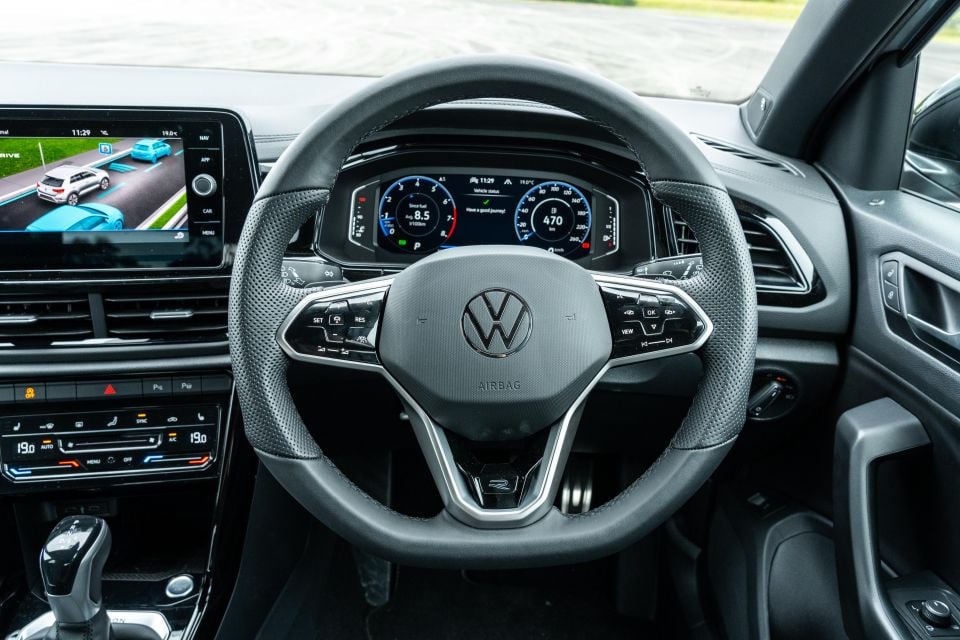
The flat-bottomed steering wheel is a chunky and is wrapped in leather. It even has some perforated sections for those with hot and sweaty hands.
The buttons on the steering wheel are of the heavily criticised touch-capacitive variety. If you’re coming from traditional steering wheel buttons they will feel incredibly strange at first.
When you press a button there are half and full press options that aren’t immediately obvious. Think of Force Touch for older iPhone and Mac users. There are also swipe gestures for adjusting things such as volume or content on both screens.
To save all the hassle it would be much easier if the T-Roc, plus a number of other Volkswagen models, came with regular steering wheel buttons instead. Even Volkswagen Passenger Cars CEO Thomas Schäfer has said the company plans to bring back the hard-button steering wheel.
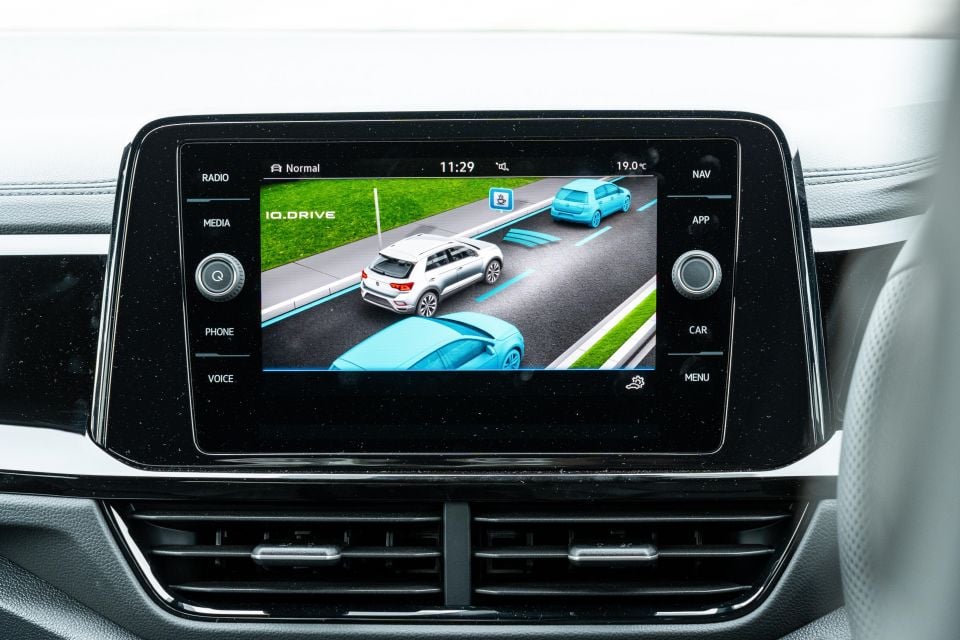

Ahead of the driver is a familiar 10.25-inch Digital Cockpit cluster that’s very configurable. You can make a number of the display menus – including the map view – full-screen which is a cool party trick.
I predominantly stuck with the traditional rpm and speed gauges and had the map view in the middle. I also swapped out the map view at times to view the fuel consumption.
Moving across is the 8.0-inch touchscreen infotainment system that unfortunately looks a little small in its housing. It’d be nice to have the screen just a little bit larger like the R flagship (which gets a 9.2-inch unit).
The touchscreen is flanked by a range of touch-sensitive buttons and two knobs. The power icon on the volume knob spins around with use which drives me absolutely insane because it doesn’t stay upright unless you place it there and use the steering wheel to adjust the volume.
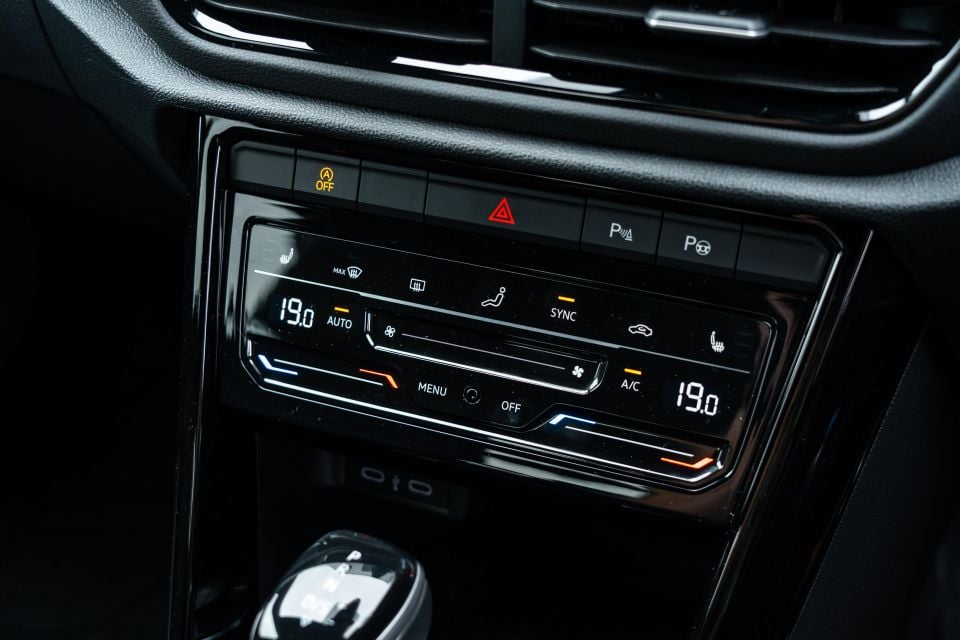
The screen itself takes a little while to get booted up properly but once it does it’s quite snappy to interact with. Swiping is pretty quick but leaves smudgy fingerprints everywhere. There is gesture control though, which can be used on some of the menus.
Wireless Apple CarPlay and Android Auto are standard on the T-Roc R-Line, and everything looks good on the high-resolution display. Swiping can be a little bit laggy at times, but in the grand scheme it works completely fine.
What was annoying was the wireless phone charger not working with my iPhone 11 Pro Max. I’ve had my phone work on many wireless phone chargers previously but the T-Roc R-Line’s didn’t like it one bit. I also tried with my phone case on an off to no avail.
Satellite navigation comes as standard on the T-Roc R-Line and it’s very confusing and clunky to operate. It also takes its sweet time to find addresses when you’re searching.
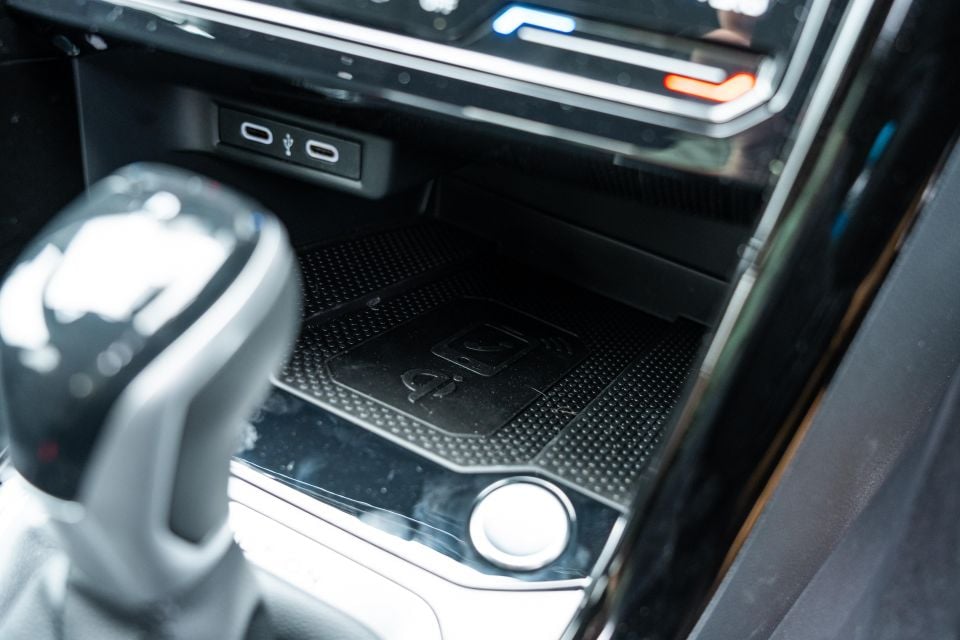
I wouldn’t recommend using the built-in satellite navigation and would instead suggest using Google Maps or something of that ilk with smartphone mirroring.
Under the touchscreen are yet more touch-capacitive buttons, for the climate control this time. They have touch and slide controls which is a cool party trick, but could really be push-buttons instead like the old one.
If you’ve never used Air Care in a Volkswagen before you’ll be blown away with how quickly it can get rid of yucky smells in the car.
On the centre console there are some strangely-shaped cup holders with a piccolo coffee cup spot right in the middle. There’s even a perfect space for the key near the electric park brake.
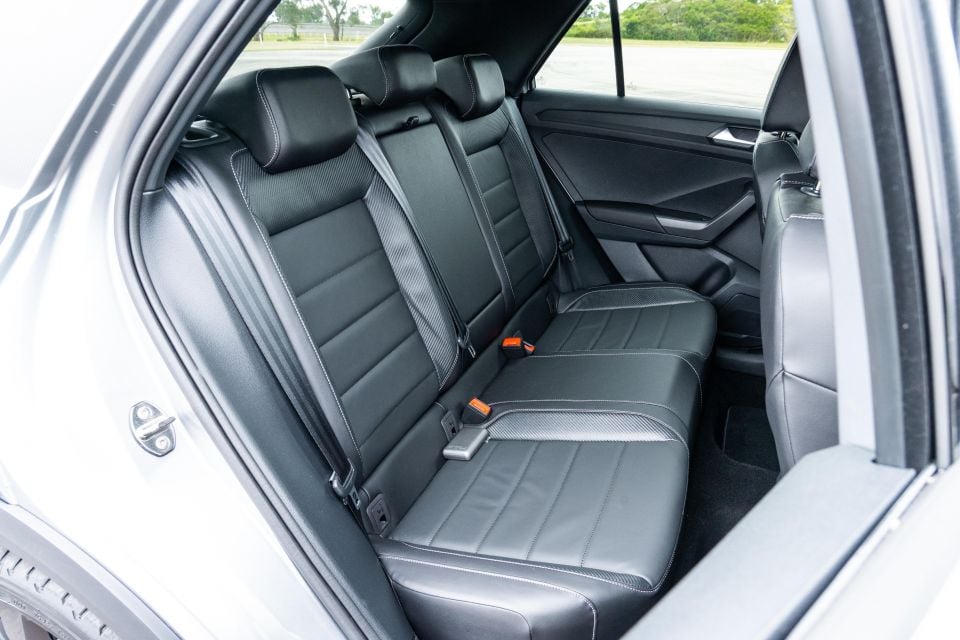

The centre armrest is nicely padded, but the storage space underneath it is quite puny.
Speaking of other storage options up front, the glove box is massive and isn’t impeded by the owner’s manual as there’s a special spot for it under the front passenger’s seat.
Moving to the second row there wasn’t much space for me behind my own driving position at a leggy 182cm tall.
While leg room is quite compromised for adults, head and toe room is quite good. In order to get comfortable I found I had to splay my leg on either side of the seat in front. Shorter adults and kids will be at home in the back of the T-Roc though.
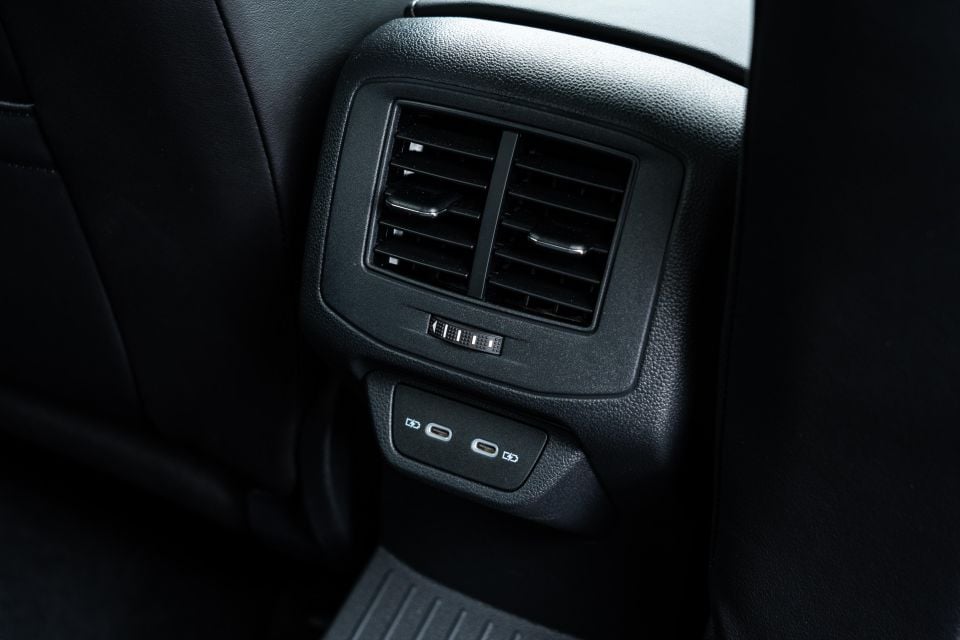
The rear seat itself is quite plush and the armrests are soft and squishy. There are also air vents and USB-C ports on the rear centre console.
Something I will note is when getting out of the T-Roc I had to step out like a ladder. The door opening is quite narrow and I couldn’t contort my legs enough to get out normally.
The boot in the T-Roc R-Line measures in at 392 litres with the rear seats down. This is incrementally smaller than the base T-Roc Style.
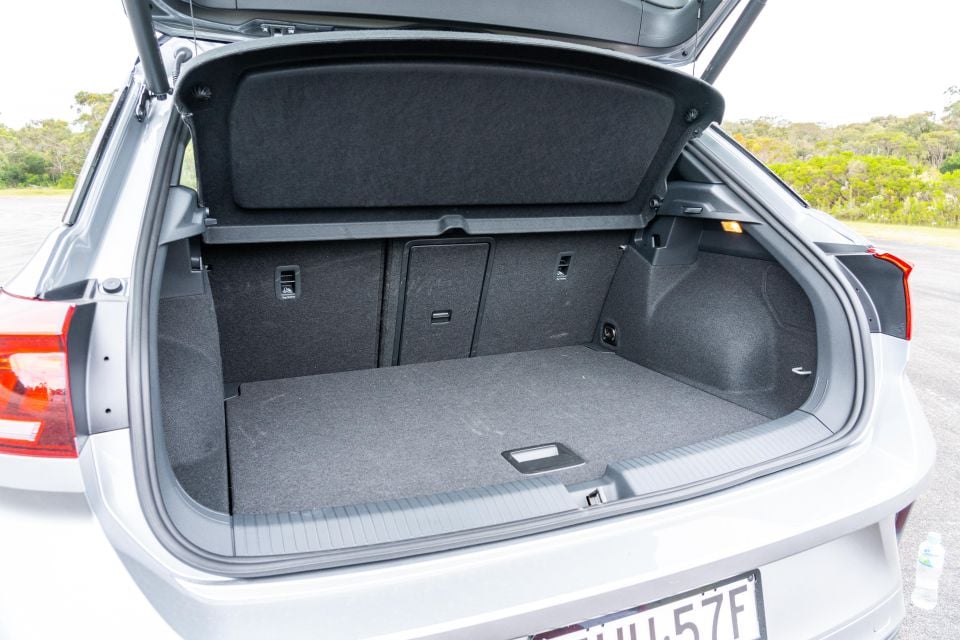
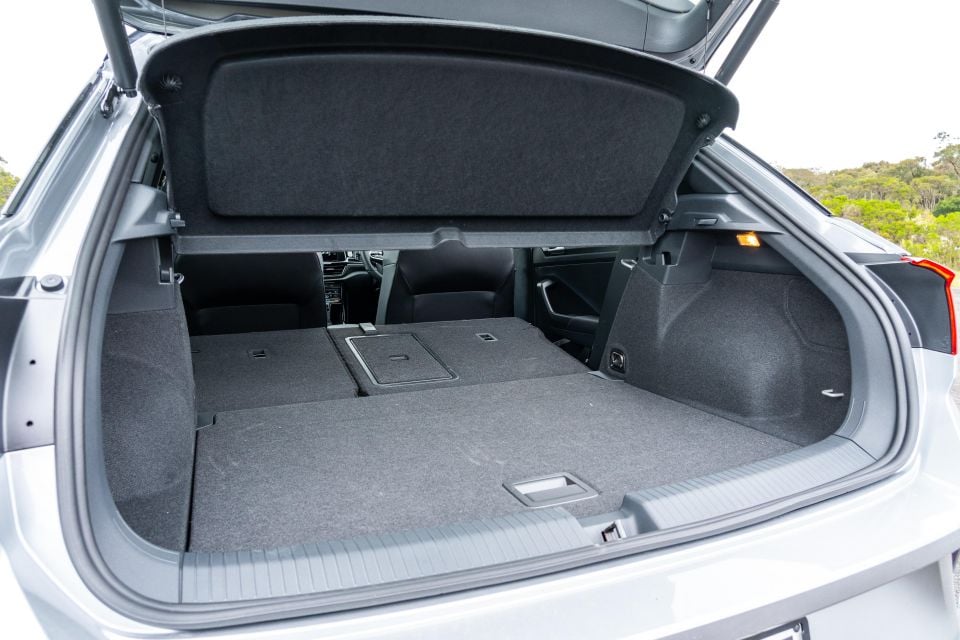
Where expert car reviews meet expert car buying – CarExpert gives you trusted advice, personalised service and real savings on your next new car.
The boot has a height-adjustable floor but due in part to the subwoofer that forms part of the $2900 Black Style package’s Beats premium sound system you can’t change the level.
The subwoofer is mounted inside the space saver spare wheel which is nice to have given a number of its premium rivals have runflat tyres.
The Volkswagen T-Roc R-Line is powered by a 2.0-litre turbocharged four-cylinder petrol engine producing 140kW of power and 320Nm of torque.
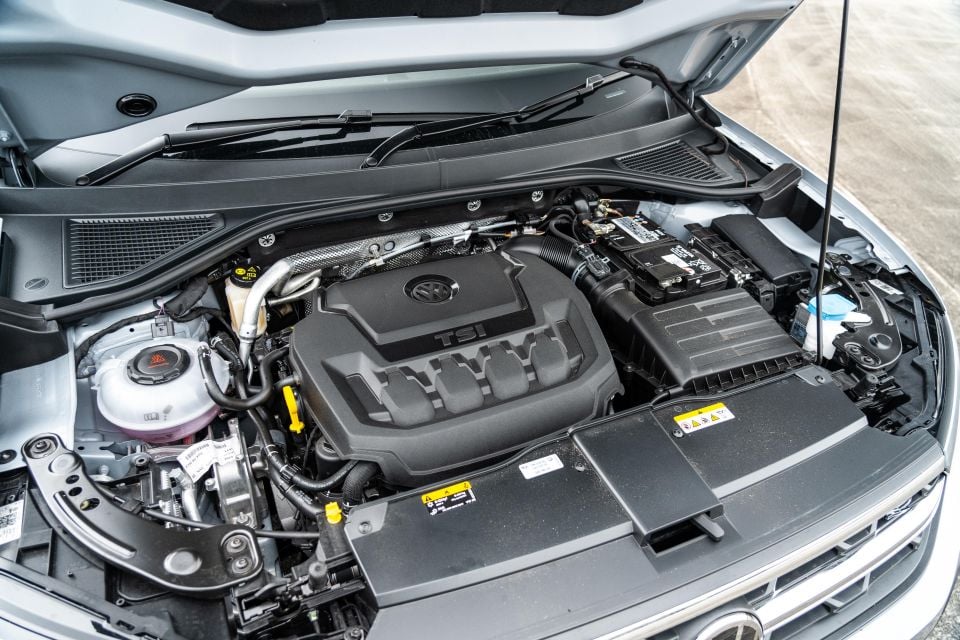
A similar version of this engine and tune is available in the Skoda Karoq Sportline, Cupra Formentor V, and Audi Q2 40 TFSI.
The turbo petrol engine is mated to a seven-speed ‘DSG’ dual-clutch automatic transmission, with drive sent through a 4Motion all-wheel drive system.
The T-Roc R-Line is the second most-powerful model in the current line-up before you step up to the fire-breathing T-Roc R, which produces 221kW and 400Nm.
Claimed combined fuel economy for the T-Roc R-Line is 7.3 litres per 100km, though during our time we saw an average of 8.6 litres per 100km over a mix of highway and city driving.
It has a 55-litre fuel tank and requires a minimum of 95 RON premium unleaded petrol.
Just like the interior, driving the Volkswagen T-Roc feels very familiar. Certain parts of the driving experience are reminiscent of the Golf, whereas others are like the Tiguan.
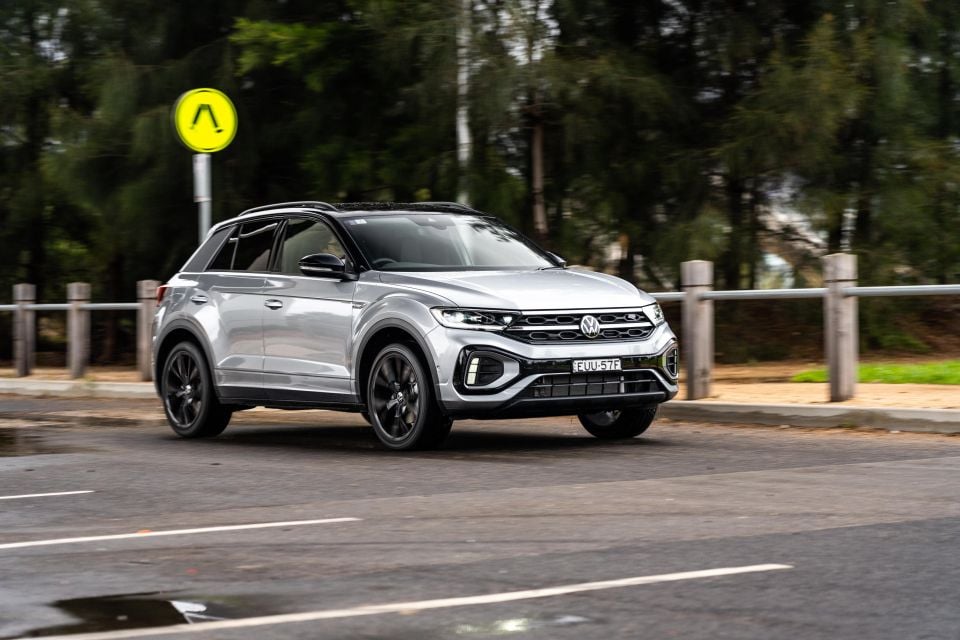
The R-Line treatment gets you a little more pep in your step, with the 2.0-litre turbocharged four-cylinder engine producing 140kW of power and 320Nm of torque.
From a standstill the T-Roc R-Line lags for a split second before taking off regardless of which drive mode is selected. This is likely because the seven-speed dual-clutch transmission in our tester was still in its learning period.
Over time the vehicle would get used to how you drive and calibrate the transmission and throttle response accordingly.
What this meant for the time we had our tester though is you’ll be initially overtaken at the traffic lights unless you can preempt when the lights will go green.
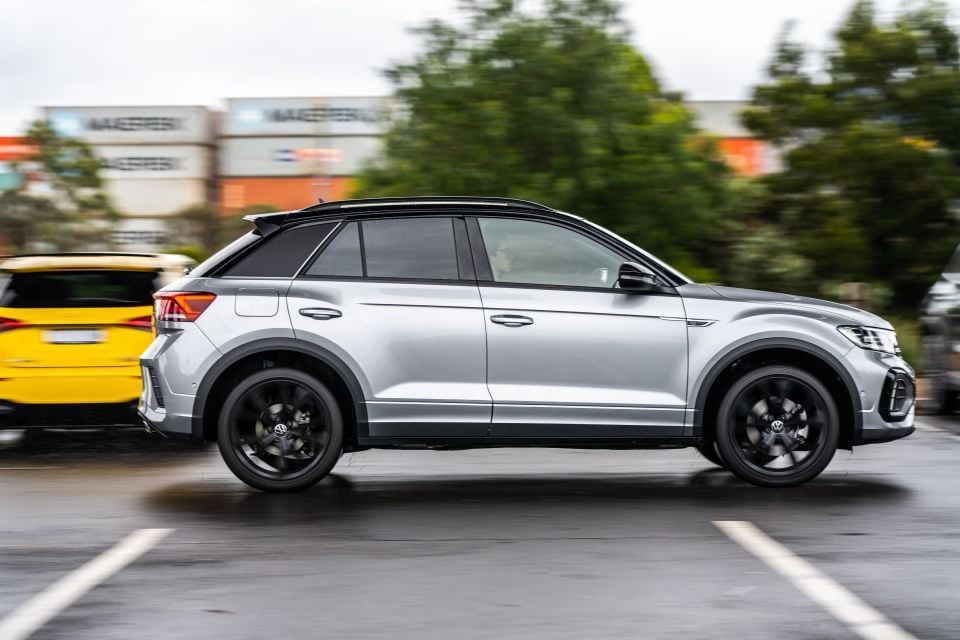
Once you do get moving, things get a lot more seamless and silky smooth for the most part. You’ll even hear a Golf GTI-esque soundtrack if you punch it a bit.
The first few gear changes can sometimes rev out to 3000rpm which is a little more than I’d like in a small-capacity turbocharged engine, but beyond second gear the dual-clutch transmission is eager to shift up gears and keep the revs down low.
Around the city the T-Roc R-Line soaks up road imperfections like a dream when in a comfort-oriented drive mode. This is amazing given the fact our tester was fitted with the optional 19-inch Misano alloy wheels which is part of the Black Style package.
This optional package also adds adaptive chassis control with adaptive dampers, which allows you to select a drive mode that can either dial up the sportiness or make you feel like you’re driving on a cloud.
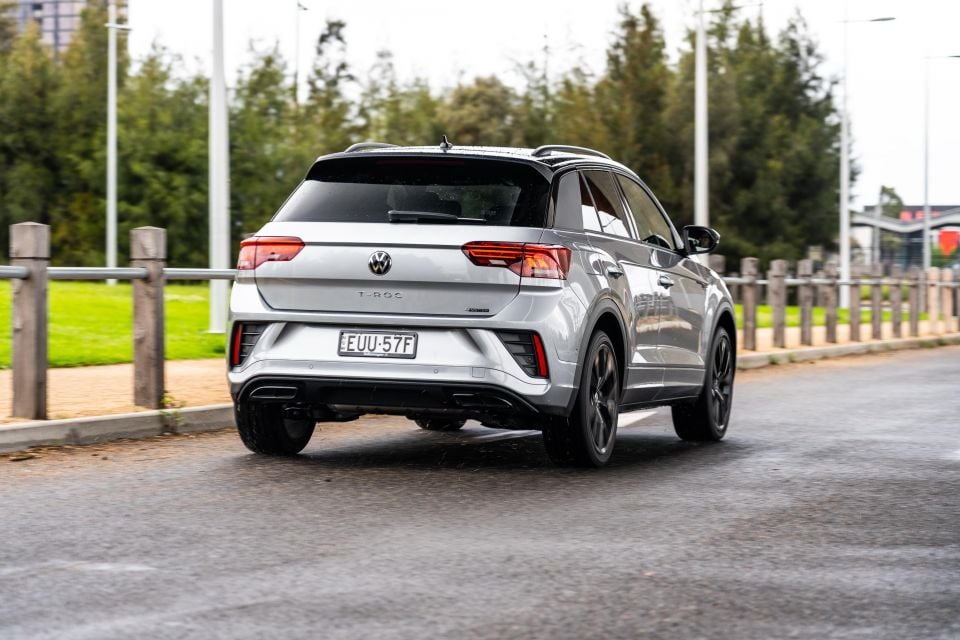
You can really feel a difference when cycling through all of these drive modes. There are even a number of off-road drive modes for those who frequent the snow or need to get to a camp site, for example.
When you dial up the speed the T-Roc R-Line becomes even more dynamic. It definitely has a little bit of warm hatch about it.
The progressive steering is best attributed to the feeling of dynamism at higher speeds as it feels very direct. You also don’t need to venture far from the steering’s centre point to begin changing directions.
The engine does begin to run out of puff somewhat at highway speeds but it still has plenty of punch to do an overtake if necessary.
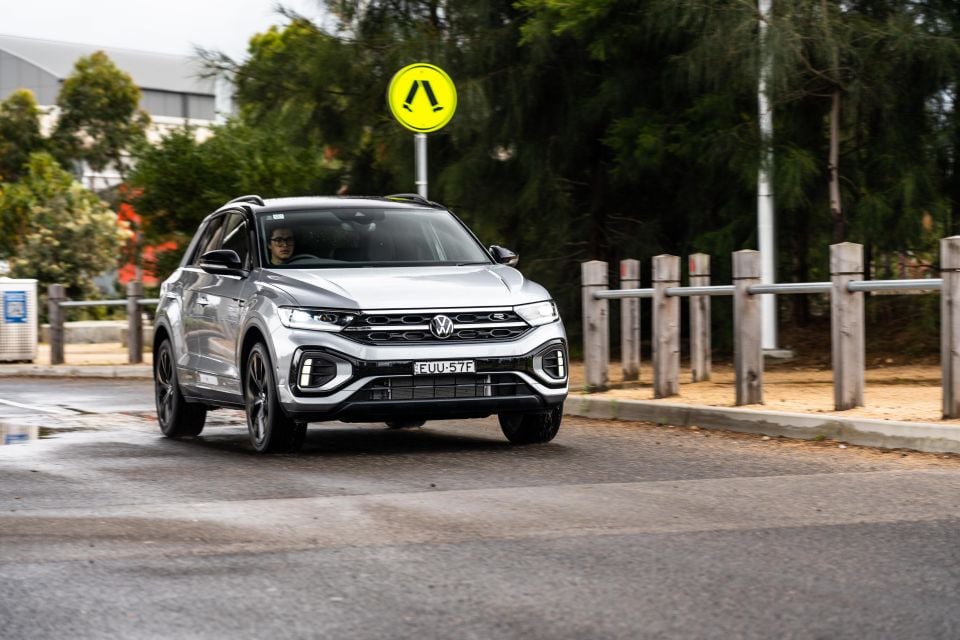
One thing that might drive you insane if you opt for the optional Black Style package is the road noise from the 225/40 R19 Bridgestone Potenza S001 tyres. It’s very boomy and you’ll be reaching to turn up the music.
Just like in the city, the T-Roc R-Line feels very compliant on the open road and doesn’t bounce around much at all on rougher sections. It picks up a more sophisticated multi-link rear suspension setup compared to the entry-level Style’s rear torsion beam setup.
In terms of safety equipment, the T-Roc R-Line’s adaptive cruise control works extremely well. The way it interacts with other vehicles that cut you off and are travelling slightly faster than you is extremely natural.
It also accelerates to the set speed gradually which is greatly appreciated as it can be unsettling having a car rev substantially to reach 100km/h as quickly as possible.
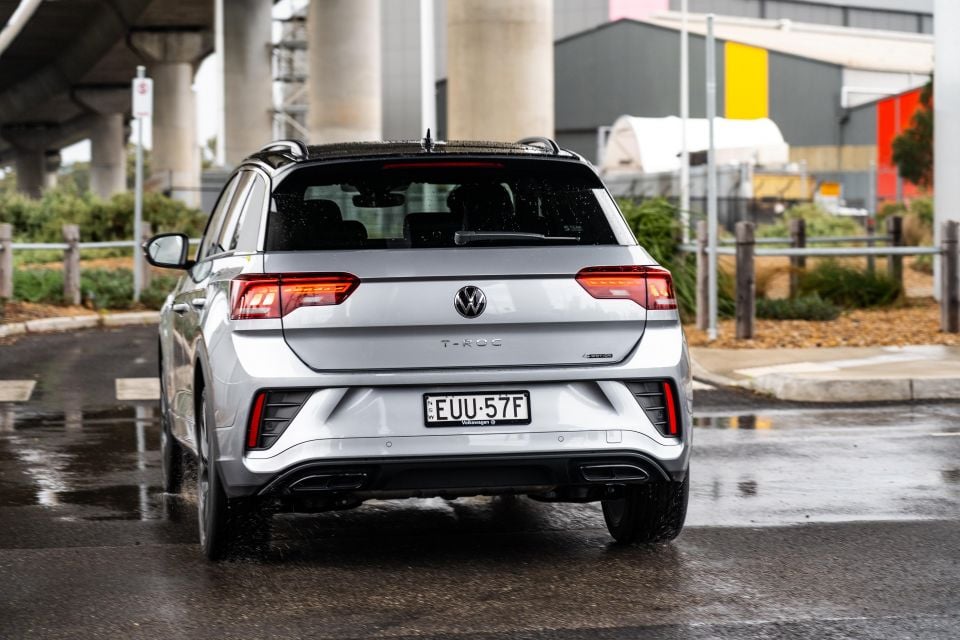
The lane-keep and Travel Assist systems worked well in most urban scenarios but got easily confused when the lane markings faded on regional and rural roads.
It’s definitely one of the better systems out there but I turned it off because I was sick of being pushed from lane marking to lane marking.

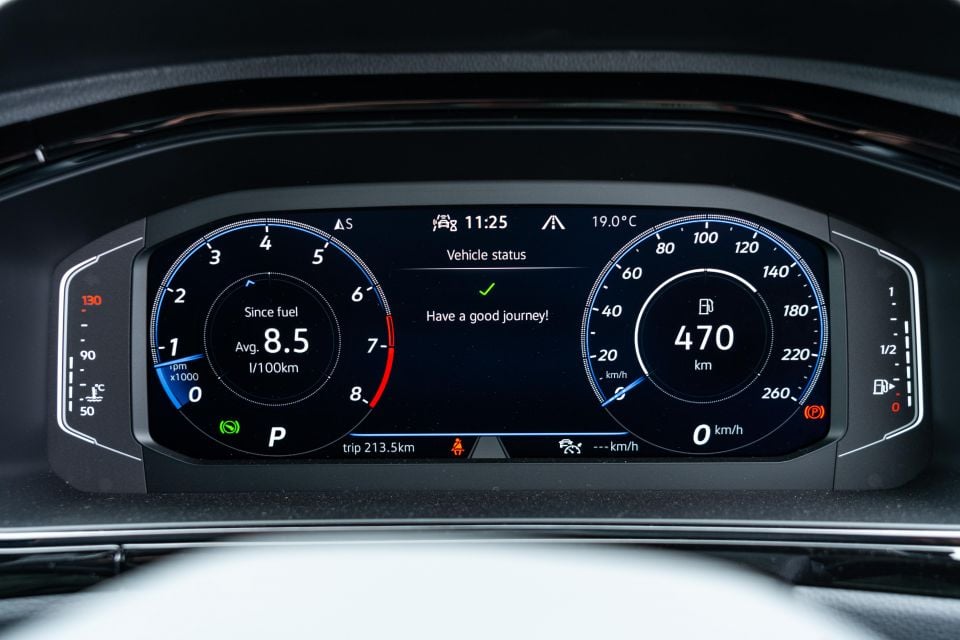
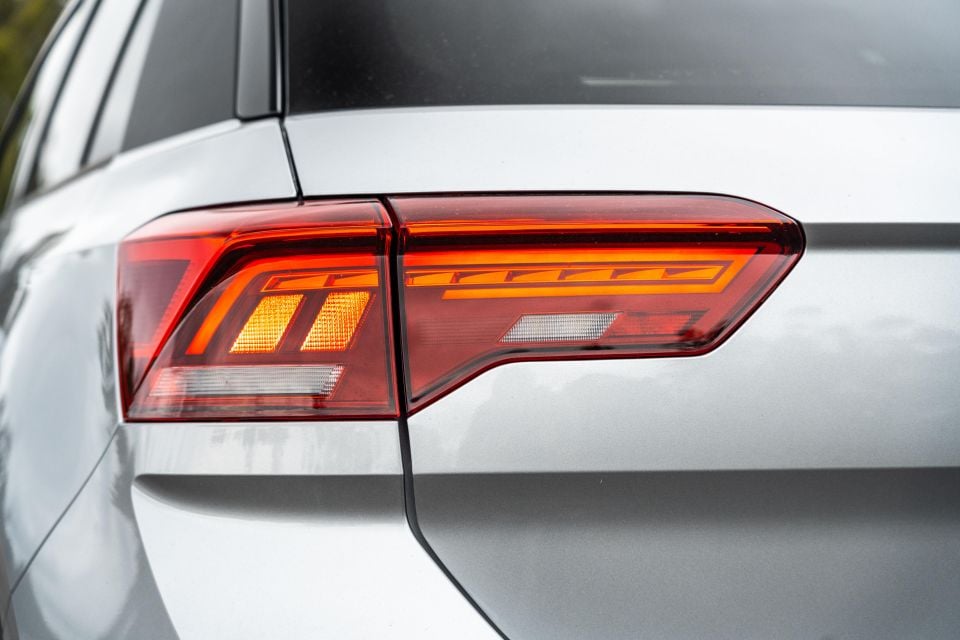

T-Roc R-Line highlights:
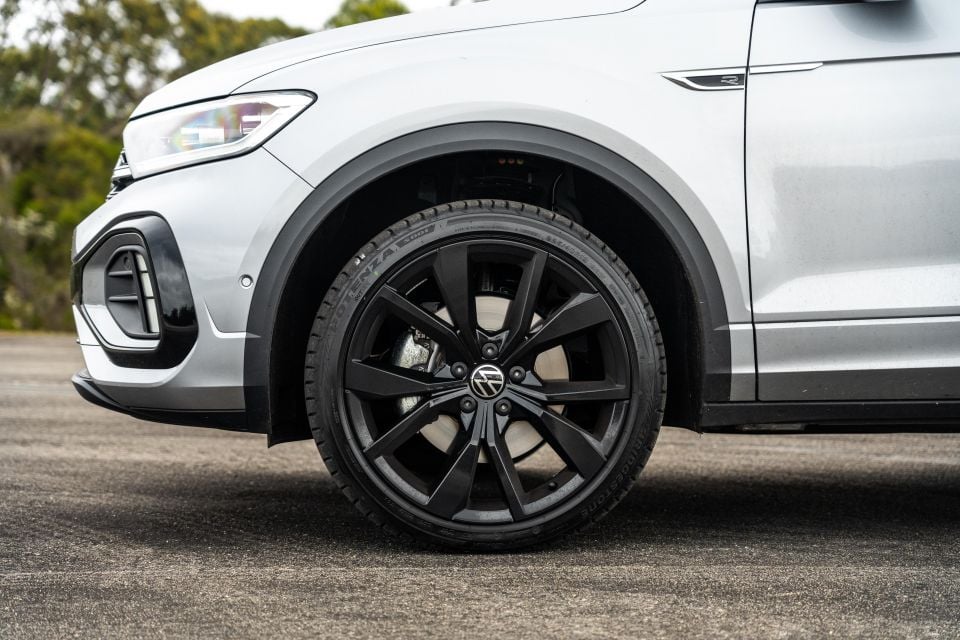
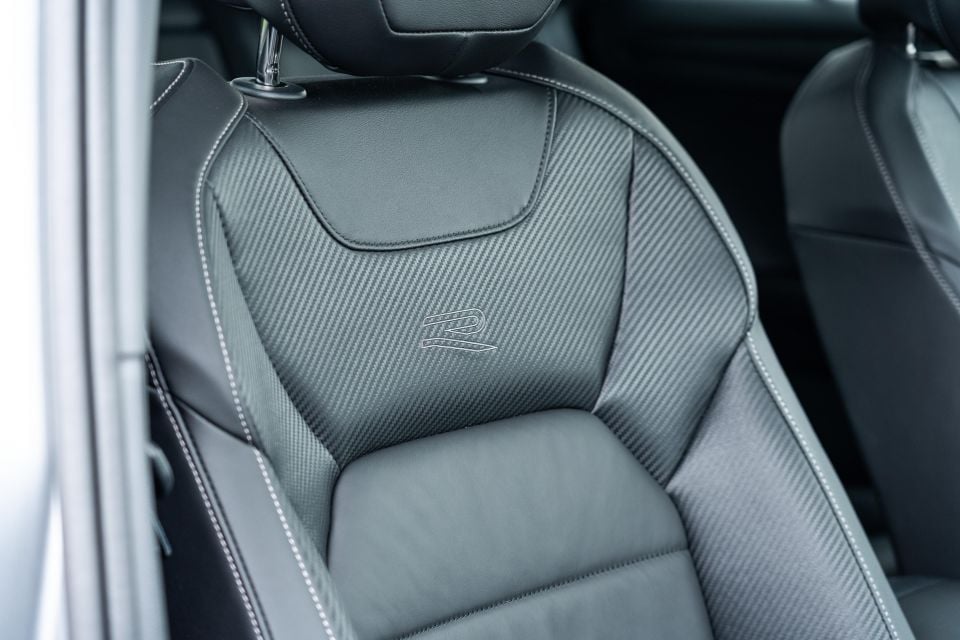
Our tester was fitted with the following optional extra packages:
Black Style package: $2900]
Leather package ($3950)
Electric tailgate: $600
The only option our tester didn’t have fitted was the panoramic glass sunroof which costs $2000.
The Volkswagen T-Roc has a five-star ANCAP safety rating based on tests conducted by Euro NCAP in 2017.
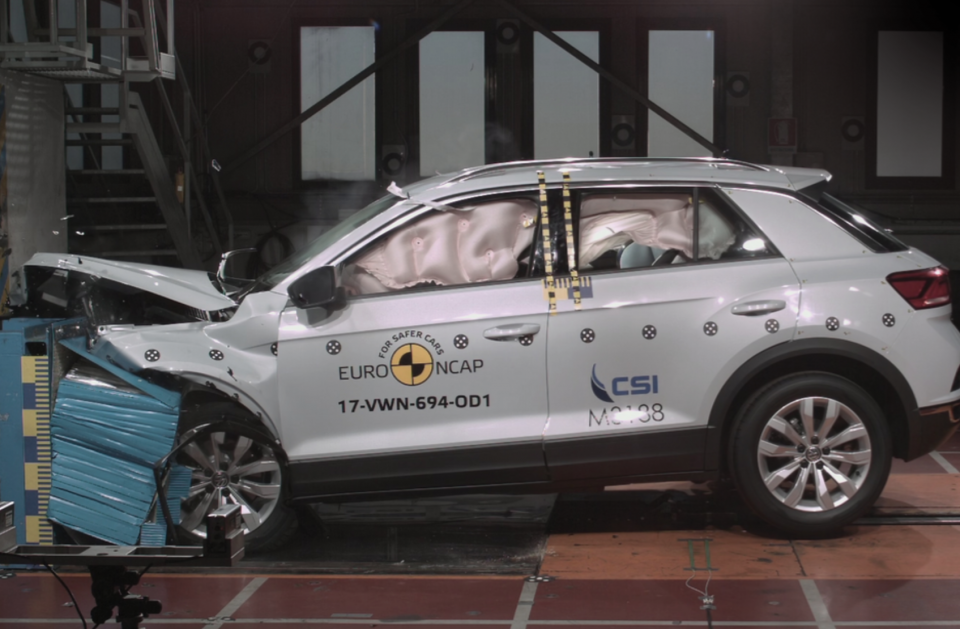
It received an adult occupant protection score of 96 per cent, a child occupant protection score of 87 per cent, a pedestrian protection score of 79 per cent, and a safety assist score of 71 per cent.
Standard safety features include:
Volkswagen Australia has removed Side Assist (blind-spot monitoring) and rear cross-traffic alert for MY23, as well as the Proactive Occupant Protection System due to component shortages.
Our tester was fitted with these, however, as it was a MY22.5 model.
The T-Roc, like all new Volkswagens, is covered by a five-year, unlimited-kilometre warranty.
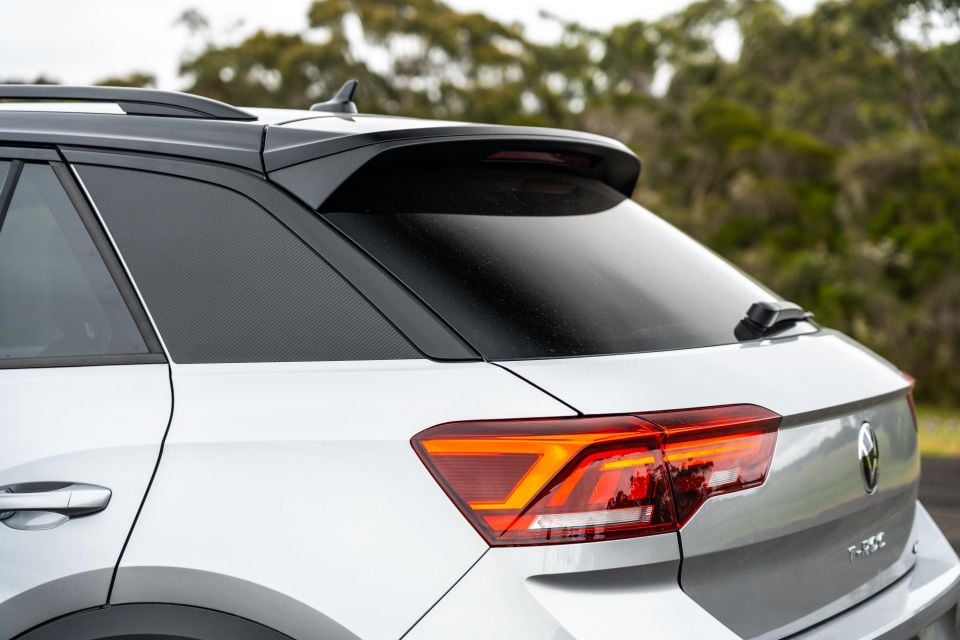
Scheduled maintenance is required every 12 months or 15,000km – whichever comes first.
Volkswagen offers three- and five-year Care Plans for all versions of the updated T-Roc, costing $1450/$2450 for the T-Roc Style, $1700/$2850 for the T-Roc R-Line, and $1700/$2950 for the T-Roc R.
This is significantly more expensive than the equivalent five-year service package for the Skoda Karoq and Audi Q2. It’s lineball with the Volvo XC40 though.
The Volkswagen T-Roc is a convincing crossover because it builds on the tried-and-tested roots of the Mk7 Golf.
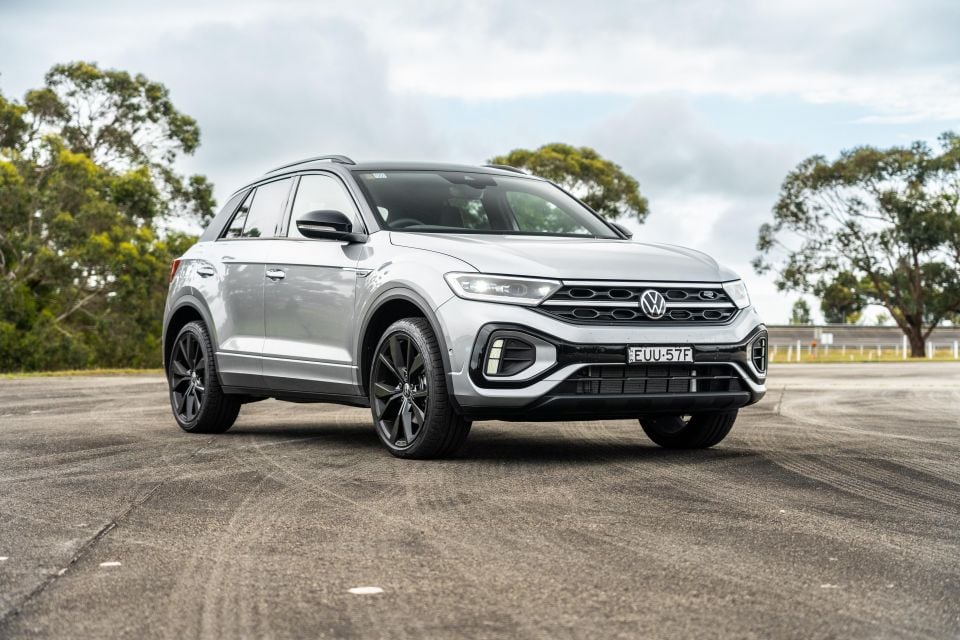
It provides a sought-after elevated seating position and a usable boot. It also doesn’t look too bad either!
Volkswagen has done a good job sprucing up the T-Roc with the mid-life update. The soft-touch dashboard and standard digital instrument cluster was desperately needed.
Despite all the praise, the T-Roc’s second row is somewhat cramped and it gets very expensive if you tick a few too many option boxes.
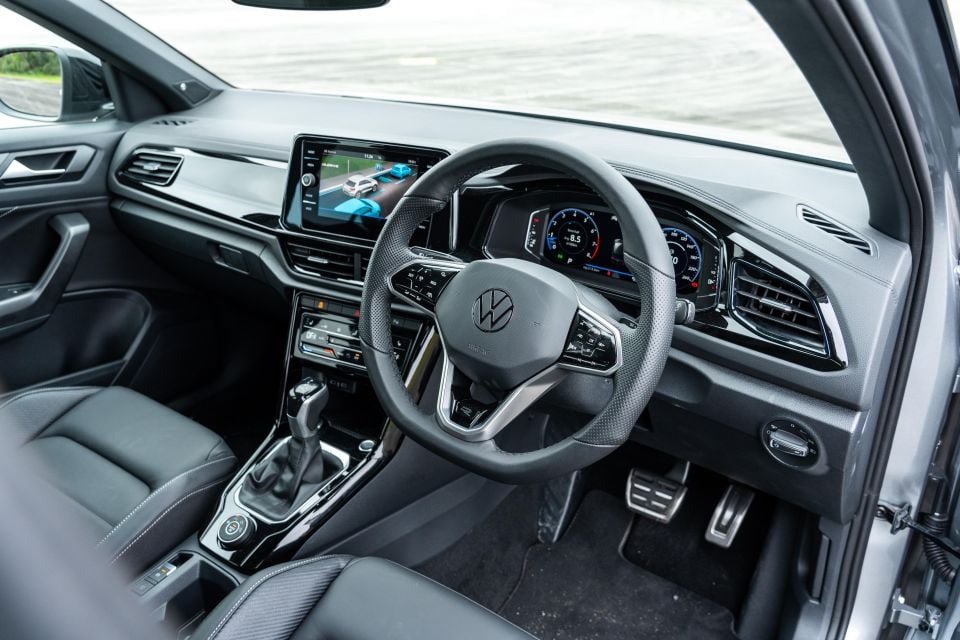
The T-Roc R-Line shapes as the pick of the range if you want a little more pep than the entry-level Style, along with a proper dual-clutch transmission.
It also comes with features like wireless Apple CarPlay and Android Auto, as well as satellite navigation as standard.
If it’s extra power you’re after though, you can opt for the hot T-Roc R Grid Edition for not too much more. Sounds quite tempting to me.
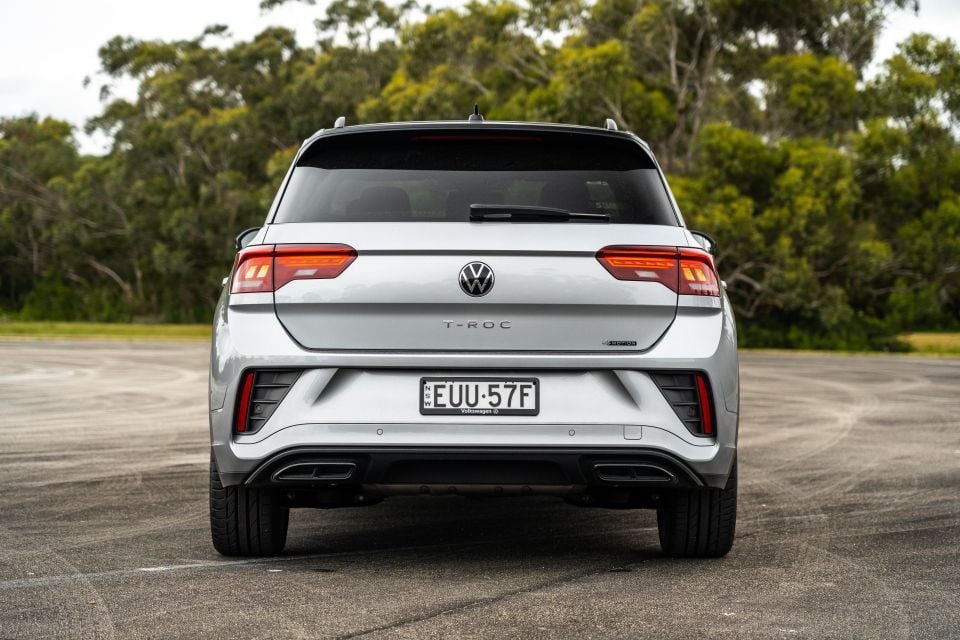
Click an image to view the full gallery.
Where expert car reviews meet expert car buying – CarExpert gives you trusted advice, personalised service and real savings on your next new car.
Jack Quick is an automotive journalist based in Melbourne. Jack studied journalism and photography at Deakin University in Burwood, and previously represented the university in dance nationally. In his spare time, he loves to pump Charli XCX and play a bit of Grand Theft Auto. He’s also the proud owner of a blue, manual 2020 Suzuki Jimny.


CarExpert.com.au
3 Days Ago


Damion Smy
3 Days Ago


Damion Smy
4 Days Ago


Josh Nevett
4 Days Ago


Max Davies
4 Days Ago


Ben Zachariah
5 Days Ago